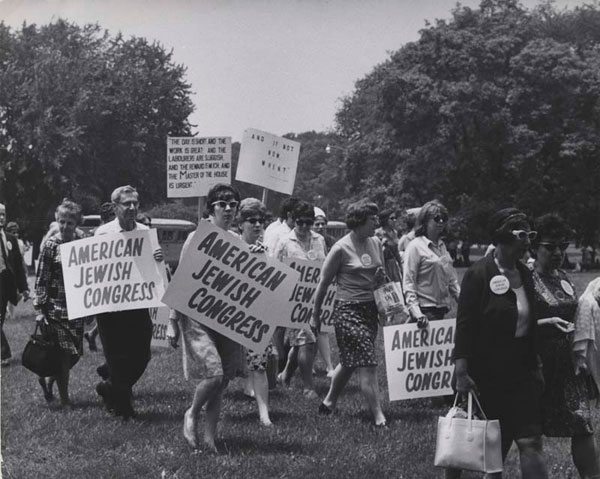
February 12, 2018; Forward
When nonprofit and charitable organizations advocate, for whom are they actually speaking? When organizations claim to represent a specific constituency, must there be a process that includes that group in setting their advocacy agenda? When a group styles itself as a grassroots organization, must there actually be a grassroots structure? The evolution of the century-old American Jewish Congress illustrates why these questions are of critical importance in this age of high-volume political strife.
According to its website, the organization, founded in 1918 as “leaders within the American Jewish community…convened the first American Jewish Congress (AJCongress) in Philadelphia’s historic Independence Hall.…Since its inception, the American Jewish Congress has been engaged in a continuous fight for equal rights for all Americans regardless of race, religion or national ancestry.” At its peak, it had local chapters in cities across the country, which, along with regular national conventions and a large board of directors, provided the mechanism for the organization’s agenda to reflect the needs and interests of its constituency.
According to the Forward, a drastic change occurred 2010 when the Congress was effectively bought out by wealthy philanthropist Jack Rosen.
AJCongress collapsed in 2010 after decades of decline and catastrophic losses resulting from Bernie Madoff’s Ponzi scheme. Rosen took over the organization under terms that included the abolishment of its network of local chapters and its membership-driven model. The group is now run by Rosen and a board of 10 people. A new executive director was hired in late 2017; he has three staff members working for him.
Rather than draw direction from those he represents, Rosen has turned the organizational model on its ear.
Sign up for our free newsletters
Subscribe to NPQ's newsletters to have our top stories delivered directly to your inbox.
By signing up, you agree to our privacy policy and terms of use, and to receive messages from NPQ and our partners.
“The theory,” he says, “is you don’t have to have 500 people show up at a convention to vote on every issue and every resolution, or overturn everything that was done in the prior year.”
Though the public face of the organization continues to reflect its historical focus on domestic civil rights advocacy, the organization has turned to pro-Israel advocacy. With no process outside the small leadership group, the actual agenda has been changed. According to the Forward, “Rosen said that the group’s unwritten mission statement is to find the 500 most important decision-makers on issues relating to Israel and to get to know them.”
Does the lack of constituent involvement and input a pose a serious problem? Does it make a difference that there’s no real community behind an organization that claims to be representing one? Writing for NPQ, Chao Guo observed that it does threaten their legitimacy:
If nonprofit boards fail to include representatives of their constituents and the larger community in their governance structure and processes, then to what extent do they have the capacity to govern effectively on behalf of their constituents and the larger community? How can an organization contribute to a democratic society if there is a democratic deficit in its own governance?
Taking over the name and reputation of a failing organization in this manner may be a singular event, but the erosion of democratic engagement in nonprofit “community-based” organizations is becoming more widespread in the nonprofit and charitable sector. Deborah Dash Moore, who teaches at the University of Michigan, told the Forward that this phenomenon has changed the face of many American Jewish organizations: “The notion that you have democracy in American Jewish life is not championed by any organization in American Jewish life today.”
Rosen is correct: It is easier and less expensive for an organization to act if there’s no need to listen to many diverse views and build consensus. Rosen is wealthy enough to fund the organization he now controls; if he spoke and acted in his name alone, the only issue would be if you disagreed with the message. But when an organization claims to speak for a community with which it does not actively engage, that can be dangerous. When a community’s voice is used this way, its true interests can be ignored and its ability to advocate on its own behalf lessened—even lost. Democracy is threatened when grassroots nonprofits do not have a mechanism to ensure a connection between constituency and organization.—Martin Levine













